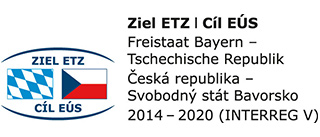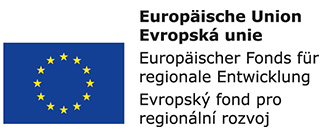Cross-border mapping of forest ecosystems – Road map to joint management in the national parks Šumava and Bavarian Forest
Motivation:
The area of the Šumava National Park and the Bavarian Forest National Park is unique in Central Europe due to its ecology and related tourism which together offer benefits for the entire Czech-Bavarian region. It is therefore appropriate and desirable that the protection and the applied administration of this area is as coherent as possible. Comprehensive information on the structure of forest ecosystems is needed to ensure sound management of this area. Among other things, this is a very important indicator that influences both the occurrence and the number of grouse species. In addition, the current structure is also crucial for dynamics of future forest development.
Project aims:
The aim of the project is to analyze the impact of forest damage caused by bark beetle and climate change, and the accompanying development of the forest structure and natural regeneration of the forest. To capture the forest structure, an innovative method of laser scanning is used, which considerably simplifies and accelerates field work and additionally reduces costs. Thus, the structure and species composition of the forest stands is uniformly recorded for the entire area of both parks. Furthermore, a large cross-border monitoring area along the former Iron Curtain will be created to allow the long-term observation of forest structure and dynamics. Simultaneously, this area stands as a symbol for a working cooperation between the two national parks. Furthermore, a model will be created which deals with the natural rejuvenation of a mountain forest after a disturbance.
Untersuchungsdesign:
The forest structure data will support the protection of the capercaillie, black grouse, and hazel grouse. The state and size of the populations, as well as the genetic variability will be determined. In addition, grouse occurrence maps will be made, population predictions, and a set of joint recommendations to improve or maintain the number of grouse. The structure of the most suitable biotope for these species and proposals for measures to promote it will also be identified to ensure the long-term survival of these species in both national parks. Based on the data, results and experience stemming from the project, recommendations will be made that will apply to the area of both national parks. A shared vegetation map will be used to create strategic documents for both organizations. Furthermore, biological data will be collected on the monitoring area according to a globally recognized methodology. Therefore, our data will be comparable to data from different parts of the world. The scientific knowledge that will be available to professionals and enthusiasts alike will increase the ecological value and attractiveness of the whole area and improve the management of protected areas.
Funding:
- Programm zur grenzübergreifenden Zusammenarbeit Freistaat Bayern - Tschechische Republik Ziel ETZ 2014 - 2020
Contacts person:
Prof. Dr. Marco Heurich
Head of department
Marco.Heurich@npv-bw.bayern.de
Collaborators:
- Nationalpark Šumava www.npsumava.cz
- Botanisches Institut Průhonice www.ibot.cas.cz
- Tschechische Agraruniversität Prag www.czu.cz
Publications:
- Fischer S. (2017) Die Auswirkungen von Abwurfstangen auf Wildarten im Nationalpark Bayerischer Wald, project thesis
- Pascual J., von Hoermann C., Rottler-Hoermann A-M., Nevo O., Geppert A., Sikorski J., Huber K. J., Steiger S., Ayasse M., Overmann J. (2017) Function of bacterial community dynamics in the formation of cadaveric semiochemicals during in situ carcass decomposition, Environmental Microbiology, doi:10.1111/1462-2920.13828




